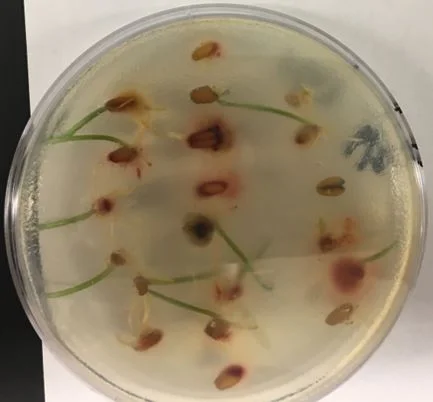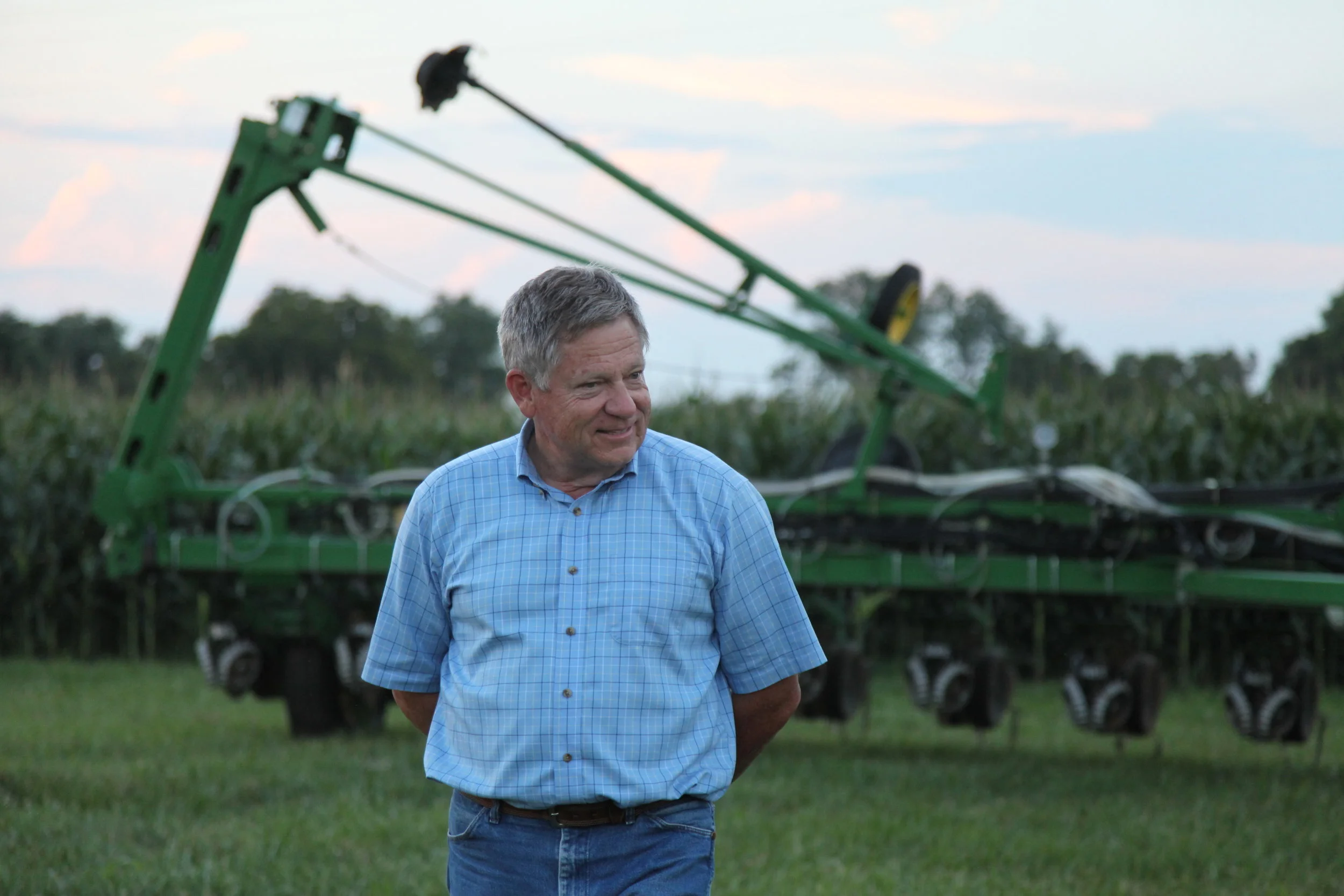Rye as a grain crop has a potential local market with distilleries. Rye has not been grown in Kentucky since the 1920’s. We have been conducting research for several years on growing rye for grain. In the 2019 harvest season, we established rye at Princeton and Lexington to test several management hypotheses and fungicide efficacy against the Fusuriaum head blight (FHB).
Read MoreStagonospora leaf blotch is one of the most common foliar diseases observed in Kentucky. When flag leaves are affected by leaf blotch, yield losses generally occur. Glume blotch also is a common disease in Kentucky, and can reduce yields and test weight. One of the most common ways to manage these diseases is through application of foliar fungicides.
Read MoreThis work is intended to answer the question: Are there long term soil health benefits to having wheat in Kentucky farmers’ crop rotation? Comparing wheat harvested for yield to wheat (or other small grain) as a cover crop, is it better for the soil to take wheat to grain harvest?
Read MoreSpecialty small grains (e.g., cereal rye, hard red winter wheat, and malting barley) are a vital input into products like artisan bread, craft beer, and bourbon. Therefore, there are potential opportunities for Kentucky farmers to supply various specialty small grains to support the expansion in these markets.
Read MoreCurrent agronomic practices to reduce vomitoxin levels include planting moderately resistant wheat cultivars and fungicide applications at beginning flowering (Feekes 10.5.1 growth stage). This project is examining whether additional agronomic practices may potentially lower vomitoxin levels.
Read MoreCrossing: We produced a total of 550 crosses in the greenhouse this season. We made both single cross hybrids between 2 parental lines (138) and 3-way crosses (412) where the hybrid is crossed to a third parent.
Read MoreKentucky farmers harvested 25.1 million bushels of winter wheat during the summer of 2019 according to the Kentucky Field Office of USDA'S National Agricultural Statistics Service. This was up 27 percent from the previous year. Yield is estimated at 76.0 bushels per acre, up 10.0 bushels from 2018.
Read MoreThe tariff agreement signed today by U.S. President Donald Trump and Japanese Prime Minister Shinzō Abe is a most welcome deal that will keep exports of U.S. wheat flowing to a very large and crucial market for U.S. farmers.
Read MoreJoin us September 15-16, 2019 in Lexington, KY for a celebration and learning exchange for anyone with an interest in grains from our Southeast region.
Read MoreThe USDA-NASS released its July Crop Production report today, based on the Agricultural Yield survey conducted at the beginning of month. The report includes information on Kentucky’s winter wheat production forecast which shows an increase of 24 percent from last year.
Read MoreIn an open letter to Kentucky’s corn and small grain producers, Commissioner Ryan Quarles addressed the changes the General Assembly made to Kentucky’s grain laws concerning the grain insurance fund and how it affects them.
Read MoreU.S. Wheat Associates (USW) and the National Association of Wheat Growers (NAWG) are shocked and dismayed by President Donald Trump’s unilateral step to impose a five percent tariff on all Mexican goods imported by the United States. This action threatens to undermine approval of the U.S-Mexico-Canada Agreement, and puts crucial wheat demand in Mexico at great risk.
Read More“Since farmers make up only 2% of the population, it can be easy to overlook the struggles that many farmers are currently facing regarding tight profit margins, cash-flow issues and potentially declining net worth,” said Jonathan Shepherd, extension farm management specialist in the UK Department of Agricultural Economics. “These resources will give farmers things to consider if exiting or scaling down their operation size is in their best interest under the current agricultural economic downturn.”
Read MoreThe end of the 2018-19 wheat marketing-year is quickly approaching so this article will provide a few comments about the old-crop wheat and set the groundwork for the new crop balance sheet and the supply and demand factors affecting the U.S. marketing year average price.
Read MoreWe’ve compiled several resources to help you make an informed decision about wheat, barley, and rye in your diet.
Read MoreIt is with great sadness that we report the passing of Don Halcomb, one of Kentucky agriculture's most influential farmer leaders. Don was instrumental in organizing the Kentucky Small Grain Growers Association and served as the first president in 1989. Once he saw the passage of the Small Grain referendum, he served as chairman of the Small Grain Promotion Council for more than 25 years.
Read MoreSiemer Milling Company is making a gift of $1 million to the University of Kentucky Grain and Forage Center of Excellence to support initiatives to improve grain quality and agronomic productivity of wheat in Kentucky and the region.
Read MoreKnow a Kentucky farmer or forester who goes above and beyond in the care and management of natural resources? Nominate them for the 2019 Kentucky Leopold Conservation Award®.
Read MoreLess than ideal weather conditions prevented many thousands of acres of wheat from being planted in Kentucky this fall. It also resulted in very dramatic developmental differences in Kentucky’s wheat crop.
Read More



















